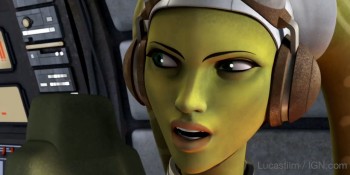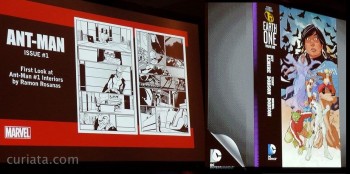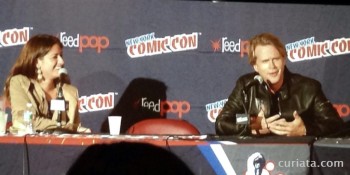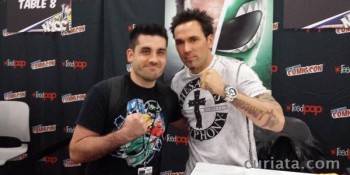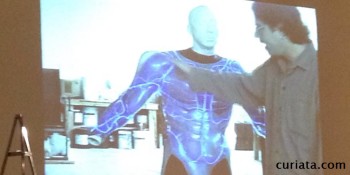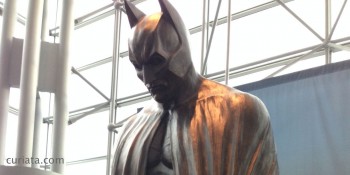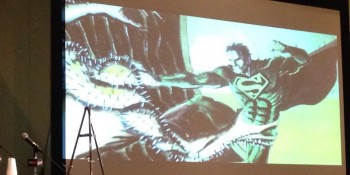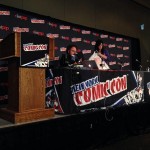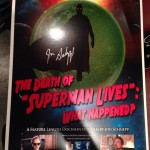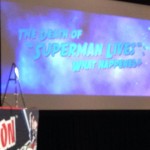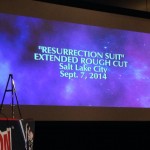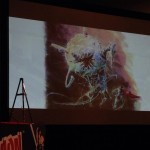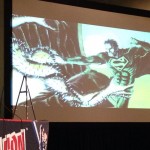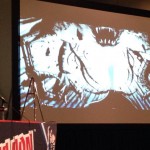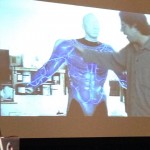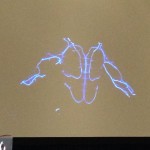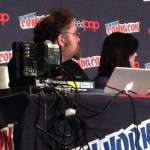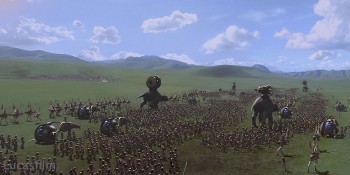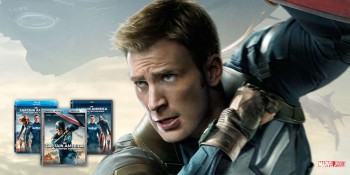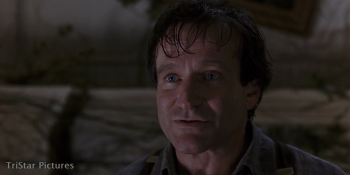Star Wars Rebels is the latest entry in the expanding Star Wars universe and is on track to be another Lucasfilm hit. The animated series was introduced on the Disney Channel this summer with a collection of shorts, leading up to a television movie pilot that aired October 3. Audiences got to preview an episode of the first 16-episode season October 11 at New York Comic Con.
The series, which began October 13 on Disney XD, is set five years before Luke Skywalker leaves Tattooine and documents the rise of the Rebellion while focusing on the ragtag crew of the spaceship The Ghost. Rebels is guaranteed to be another strong chapter in the overarching saga, and while the Star Wars universe has been greatly expanded in books and comics before, Rebels has the unique opportunity to fulfill George Lucas’ original vision for the Star Wars movies.
When Lucas first conceived of the Star Wars world, he had planned to create a series of movies that would pay homage to the adventure comic strips of his youth — namely, Flash Gordon and Buck Rogers. Lucas’ small group of heroes would face easily defined villains and take part in swashbuckling adventures across unknown worlds, full of alien species and languages incomprehensible to viewers. Each story, brought to life in either nine or 12 films, would be unique, with only a common threat binding the episodes together.
But as the films evolved, their premise did as well. As explained in The Secret History of Star Wars by Michael Kaminski, the movies changed from a collection of unique adventures into a larger epic about a single family, with only casual glimpses of the original, episodic nature Lucas had planned. Specifically, the movies became The Ballad of Anakin Skywalker, as he grew into a hero, fell to the Dark Side, and was redeemed in his final hours.
While the original Star Wars can still be viewed as a simple adventure movie, the release of Empire Strikes Back and the prequel trilogy changed the tone of the movies into one defined by moral ambiguities, political intrigue, and an interconnected world. Each installment had to have meaning in the larger story, rather than be like Lucas’ other creation, Indiana Jones, whose adventures are all distinct.
In order to create his grand epic, Lucas made the decision to abandon his strictly serial premise, and his original stories were left to history. Until recently.
With the recent acquisition of Lucasfilm by Disney, it was only a matter of time before the series’ publishing license for comic books was moved from Dark Horse to another Disney subsidiary, Marvel. Before losing the license, however, Dark Horse paid homage to the man who had built the galaxy far, far away with a new graphic novel.
The Star Wars is an adaptation of Lucas’ original 1970s screenplay — a story much more in line with the adventure serial Lucas originally hoped to film. The comic feels like what would happen if all six Star Wars movies so far were squashed into one, nearly incoherent, story. All of the signature traits of the movies are there, but it feels as though the entire story is just a single, complex mission, with many more to come later.
The Star Wars, however, is a one-off story, and the adventures won’t continue, despite the comic’s final page claiming otherwise. The exploits of Annikin Starkiller, General Luke Skywalker, and the six-foot-tall lizard, Han Solo, are finished.
Nonetheless, Star Wars comics have existed for decades and will continue next year at Marvel, with titles following Darth Vader and Rebels’ protagonist Kanan.
Comics did a lot to inspire Lucas to create the world he did, but he was a filmmaker above all else. It was always his dream to bring the excitement and intrigue he experienced on the pages of comics to the screen.
The Clone Wars cartoon series came closest to fulfilling Lucas’ vision. The successful show, which followed the heroes of the Galactic Republic as they faced the forces of the Separatists, utilized numerous characters and told as many stories. Some were complex, political thrillers, while others were classic, swashbuckling missions. Every story, however, felt like part of the larger whole; each entry mattered to the progression of the Clone Wars.
The new series, Rebels, however, follows Lucas’ original concept much more closely and delivers a satisfying, episodic ride that doesn’t always have to feed the larger story. Conceptually, Rebels is meant to bridge the gap between film Episodes III and IV by showing the strengthening of the Empire and the rise of the Rebellion. But the show is undoubtedly more in line with the spirit of the original trilogy. Rebels does not focus on politics like Clone Wars, but it revisits the philosophy of the Force, the nature of loneliness and teamwork, the tragedy of losing an entire culture, and the heroism of the unlikely. Whereas the prequels and Clone Wars brought to life villains whose motives could be seen as just, the original trilogy — and now Rebels — emphasizes flawed heroes whose actions are questionable but whose end goal is usually noble.
The spirit of Lucas’ original vision goes deeper than just antiheroism and the serial nature. The visuals and the individual characters or Rebels closely mirror early work on the Star Wars movies as well. The look of Rebels is based on the original concept art of Ralph McQuarrie. This includes protocol droids that more closely resemble the robots of Metropolis than C-3PO, and Zeb, the alien companion, whose species, the Lasat, is based on the original design for Wookiees.
Kanan leaps straight off of the pages of Lucas’ original screenplay. Halfway between Luke Skywalker and Han Solo, Kanan is identified as a cowboy Jedi, a man who was trained as a peacekeeper but finds himself on the other side of an open rebellion. His uncertainty in his abilities, coupled with his unconvincing brashness, makes him eerily similar to Annikin Starkiller and the movies’ Luke Skywalker.
Joining Kanan is the pilot of The Ghost, Hera, whose voice actress, Vanessa Marshall, said at NYCC that Hera is second only to Han Solo as the best pilot in the galaxy. Marshall sees Hera as the cross between Han and Princess Leia: she’s brash, powerful, and extremely dedicated to her crew and her mission.
Rounding out the cast are the younglings, Ezra Bridger and Sabine Wren. Ezra will fulfill the role that the Skywalkers held in the movies: the young student working to get past his arrogance and become something greater. Sabine, however, appears to be unique to Rebels. She is a Mandalorian artist who uses her skills to paint anti-Empire propaganda across the galaxy. Where Sabine goes in the future will be one of the show’s most intriguing questions.
Rebels has infinite potential to be something special in the Star Wars galaxy. It will be the first on-screen story not to focus on the Skywalker family but on the regular folks who have been impacted by the Empire’s tightening grip. It will feature swashbuckling excitement and flawed heroes, and it will examine what it takes to turn quiet dissent into open rebellion.
But, perhaps most importantly of all, the show will be a fun adventure that can stoke the imagination of child and adult alike — which is what Lucas has wanted out of his creation all along.
